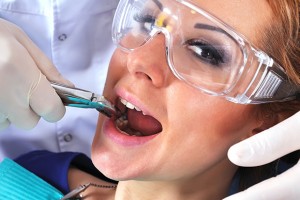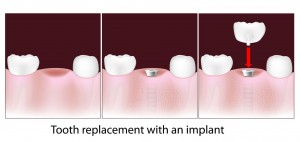Dental Extraction
Dental extraction is one of the oldest techniques in dentistry, but today most dentists try to avoid this procedure opting instead to keep and cure your own natural teeth by using other methods. Before the discovery of antibiotics, chronic tooth infections were often linked to a variety of health problems; therefore, removal of a diseased tooth was a common treatment for various medical conditions. Instruments used for dental extractions date back several centuries. In the 14th century, Guy de Chauliac (Guy de Chauliac Wiki Page) invented the dental pelican, which was used through the late 18th century. The pelican was replaced by the dental key which, in turn, was replaced by modern forceps in the 20th century. As dental extractions can vary in difficulty depending on the patient and the tooth, a wide variety of instruments exist to address each specific situation.
The Most Common Reason For Dental Extraction
The most common reason for dental extraction is tooth damage due to breakage or decay (Understanding the Connection Between Sugar and Tooth Decay Page). There are additional reasons for tooth extraction: Severe tooth decay (Your Santa Monica Dentist and Cavity Treatment Options Page) or infection. Despite the reduction in worldwide prevalence of dental extraction, decay (Cavity Treatment and Prevention Page) or infection is still the most common reason for dental extraction of non-third molar teeth, covering around 65 % of total extractions.
- Supernumerary teeth which are blocking other teeth from coming in.
- Severe gum disease which may affect the supporting tissues and bone structures of teeth.
- In preparation for orthodontic treatment (braces).
- Teeth in the fracture line.
- Teeth which cannot be restored.
- Fractured teeth (Top Dental Emergency Tips Page).
- Supernumerary, supplementary or malformed teeth.
- Prosthesis; teeth detrimental to the fit or appearance of dentures (What a Cosmetic Dentist Can Do For You Page).
Types of Dental Extraction
Extractions are often categorized as “Simple” or “Surgical”.
Simple extractions. Are performed on teeth that are visible in the mouth, usually under local anesthetic, and require only the use of instruments to elevate and/or grasp the visible portion of the tooth. Typically the tooth is lifted using an elevator, and using dental forceps, rocked back and forth until the periodontal ligament has been sufficiently broken and the supporting alveolar bone has been adequately widened to make the tooth loose enough to remove. Typically, when teeth are removed with forceps, slow, steady pressure is applied with controlled force.
Surgical extractions. Involve the removal of teeth that cannot be easily accessed, either because they have broken under the gum line or they have not erupted fully. Surgical dental extraction almost require an incision. In a surgical dental extraction the doctor may elevate the soft tissues covering the tooth and bone and may also remove some of the overlying and/or surrounding jawbone tissue with a drill. Frequently, the tooth may be split into multiple pieces to facilitate its removal. Surgical dental extraction are sometimes performed under a general anesthetic.







